CURRAHEE FLOWERS — OCTOBER
11/1/20
Even so late in the season, Currahee Mountain still has flowers, although most of the fall within a single genus of asters, Symphyotrichum. Many of the flowers are smaller, and there are fewer of them, so they aren’t as noticeable as the explosions of color in May and September. Even so, a few patches of blue asters are quite striking.
Small White Aster (Symphyotrichum racemosum, also called Smooth Oldfield Aster). These white compound flowers with yellow centers are about ½" wide. The phyllaries are roundly pointed and pressed tight to the flower head. The leaves are remarkably tiny, only ¼–½" across, although some extraordinarily slender leaves farther down the stem can be up to 2" long. The red–brown stem is smooth, and the plant forms sprawling bushes up to 2' tall.
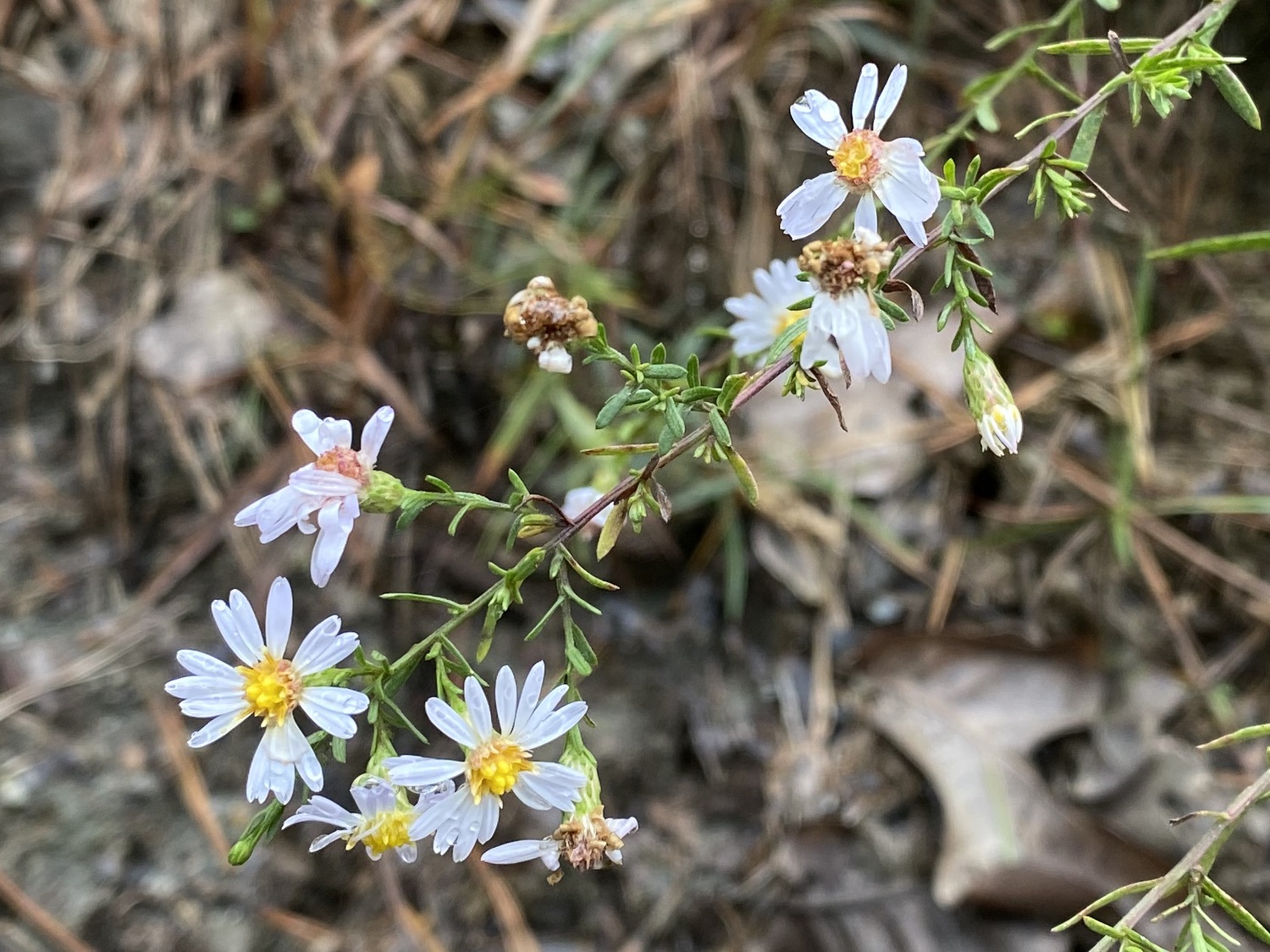
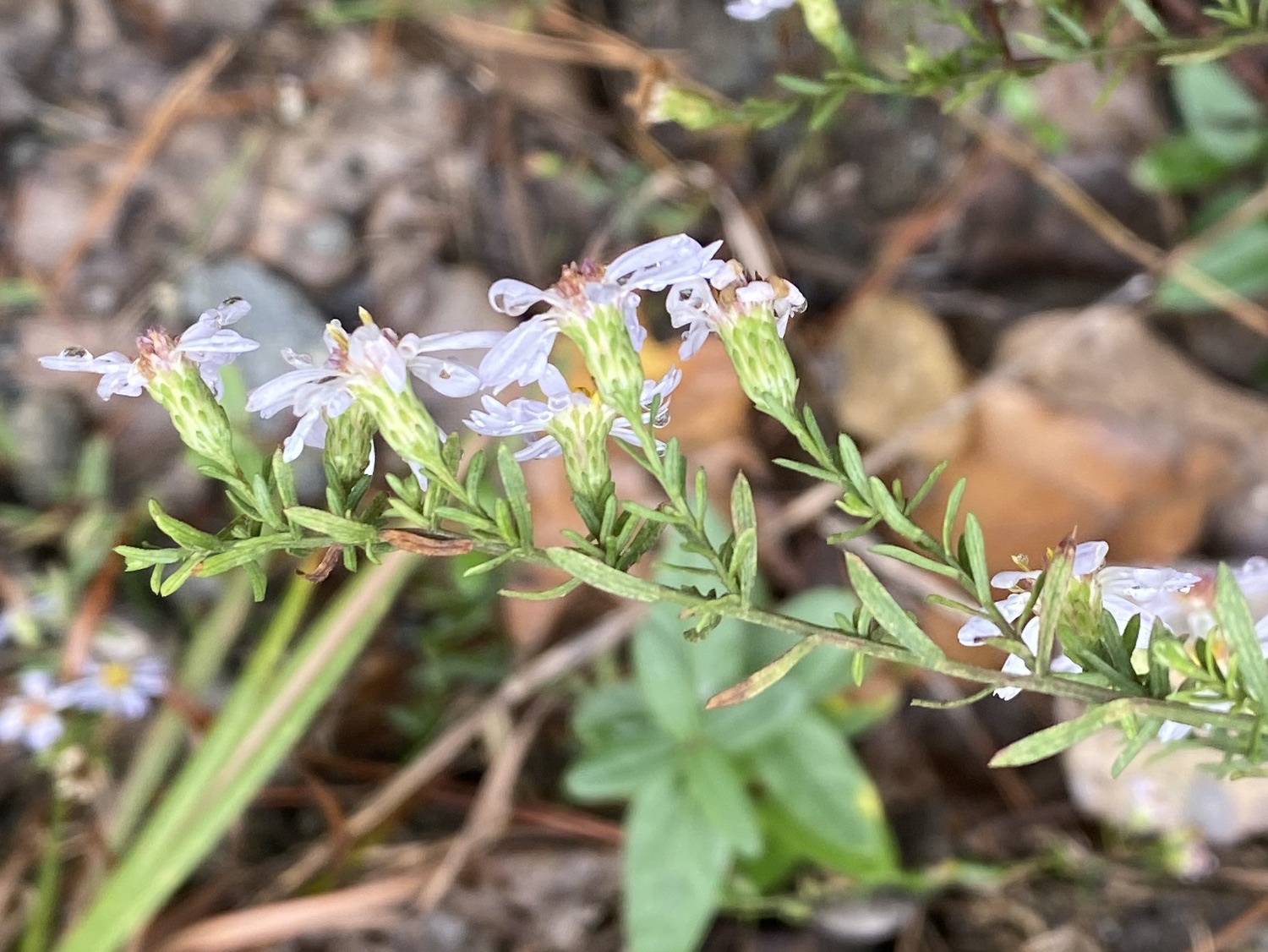
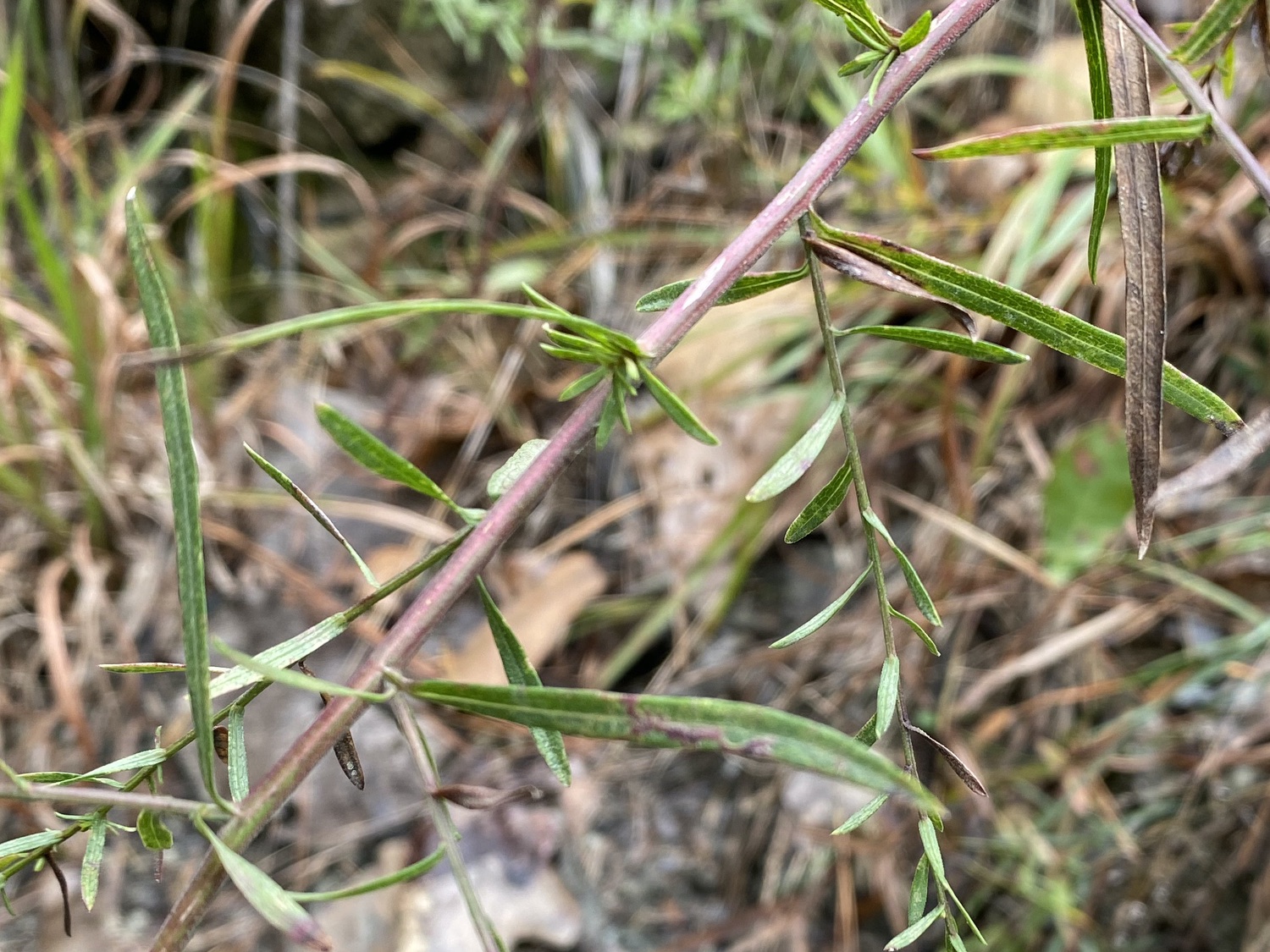
Maryland Golden-Aster (Chrysopsis mariana)These compound flowers are about 1" across. They have about 2 dozen round-tip ray flowers and a cluster of yellow flowers in the center. The phyllaries are long and pressed tight to the flower head. The stemless leaves are alternate and about 2½" long. They are oval, pointed, slightly rough, and decrease in size up the stem. The brown–green stem is single until near the top, where it branches to form a cluster of flowers; the stem has short fine white hairs. The plant is about 2½" tall. I saw these in 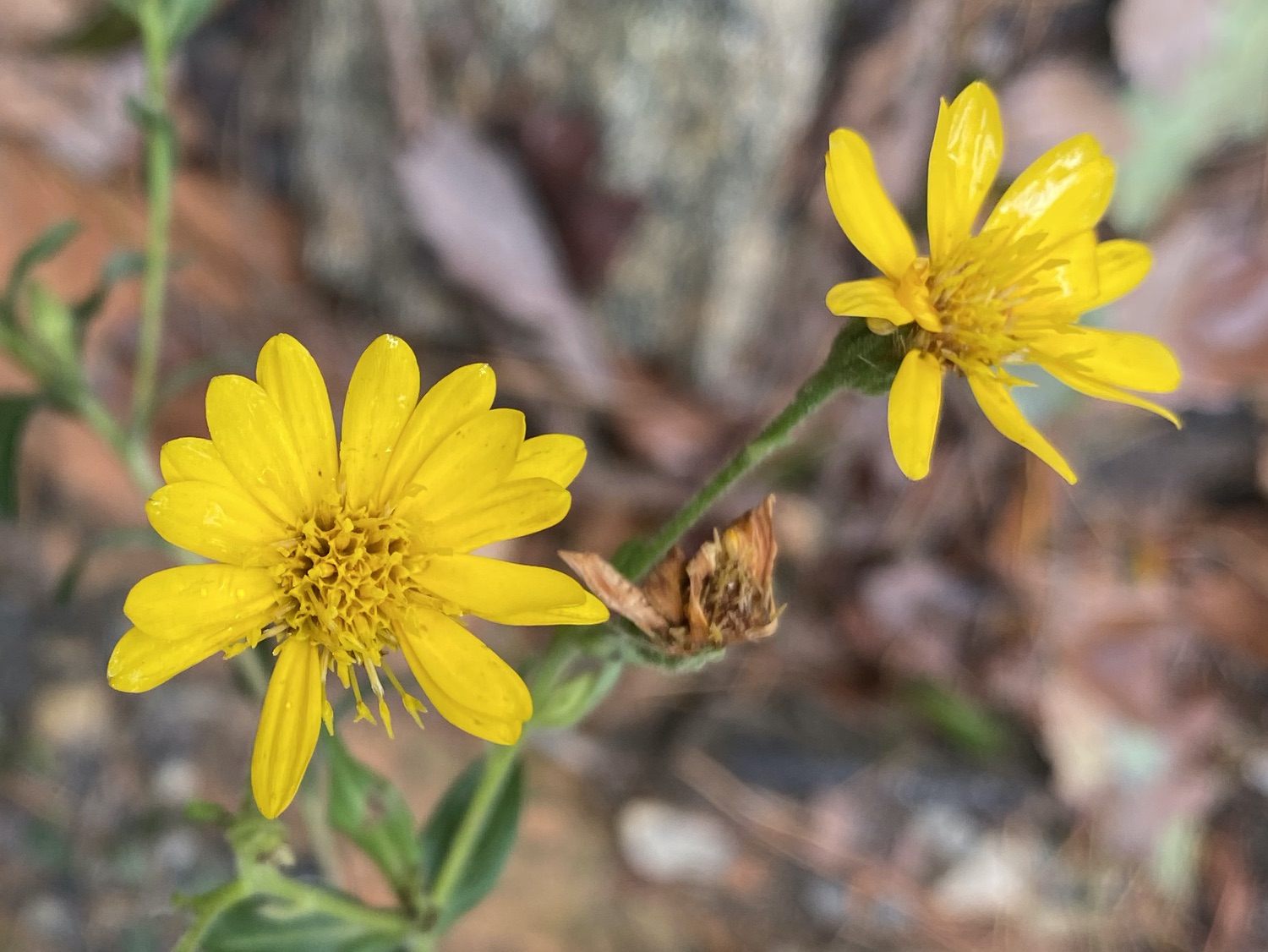
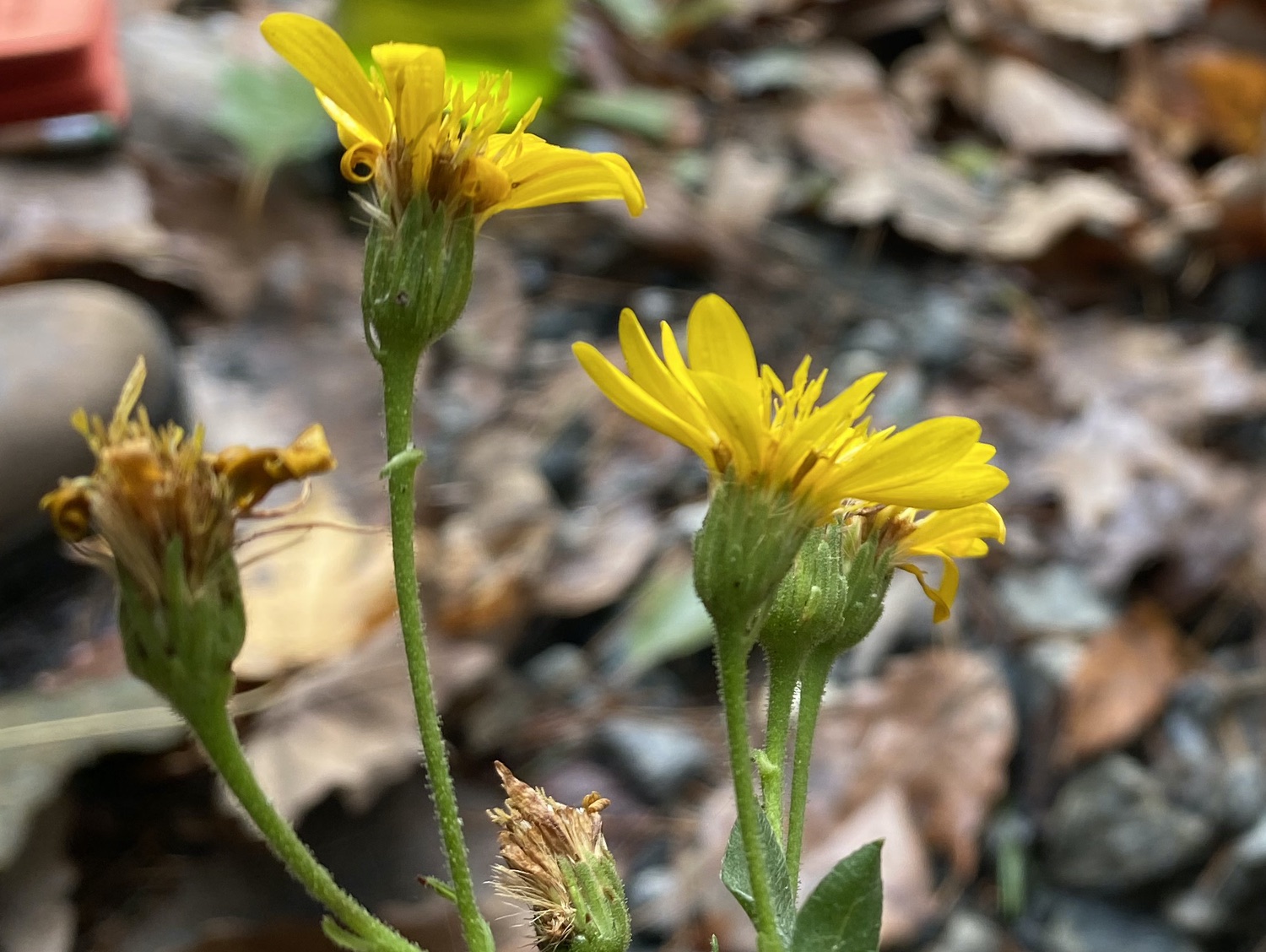

Clasping Aster (Symphyotrichum patens). This has blue–lavender compound flowers with yellow centers, and each flower is about 1½" wide. The phyllaries are pointed, and curl outward from the flower. The leaves are elongate and pointed, slightly hairy, and the base of these stemless leaves appears to wrap around the sides of the main stem. The stem is brown near the base, green near the top, and the plant is 2–3' tall. I found this earlier this summer on Currahee.
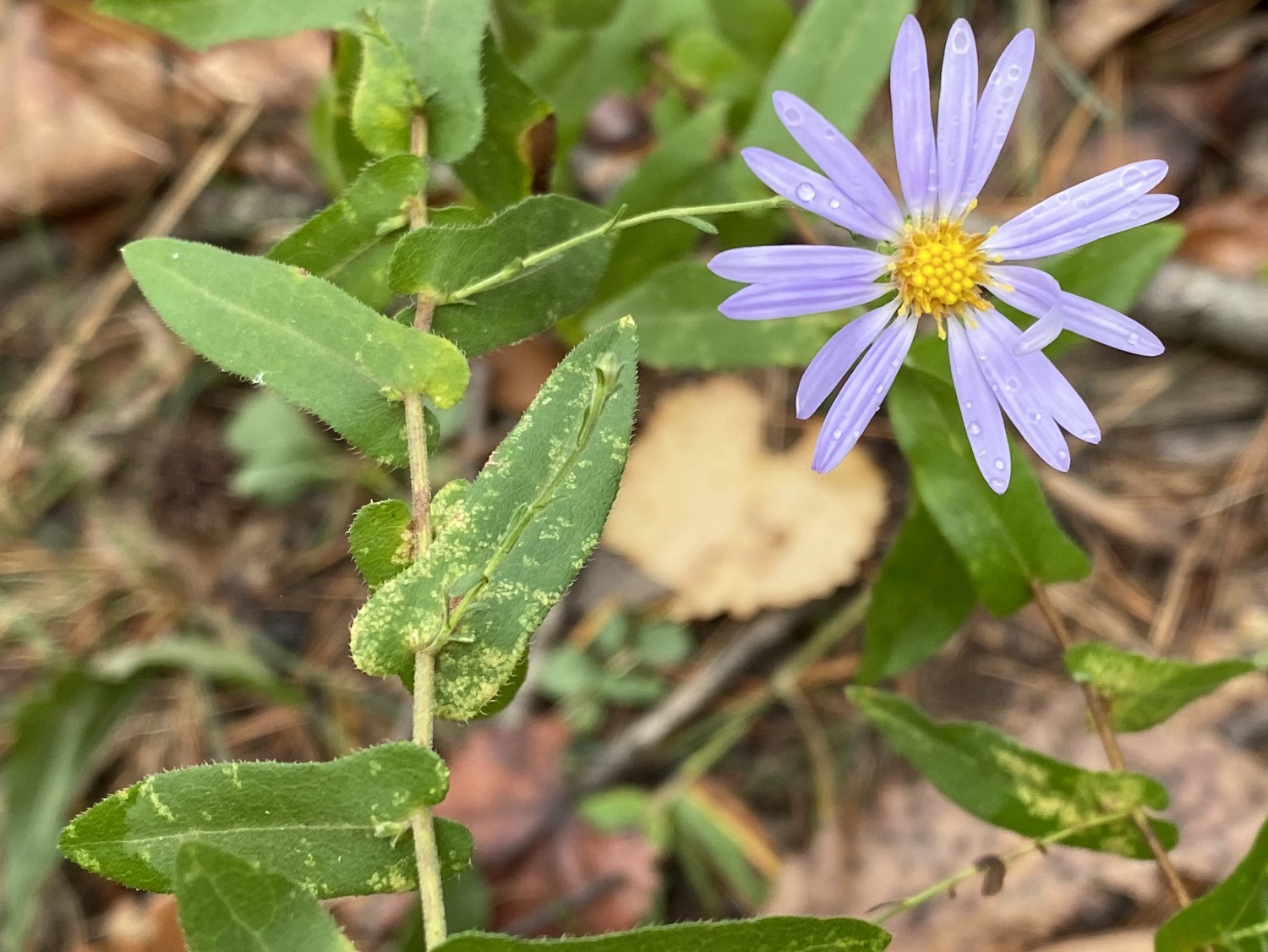
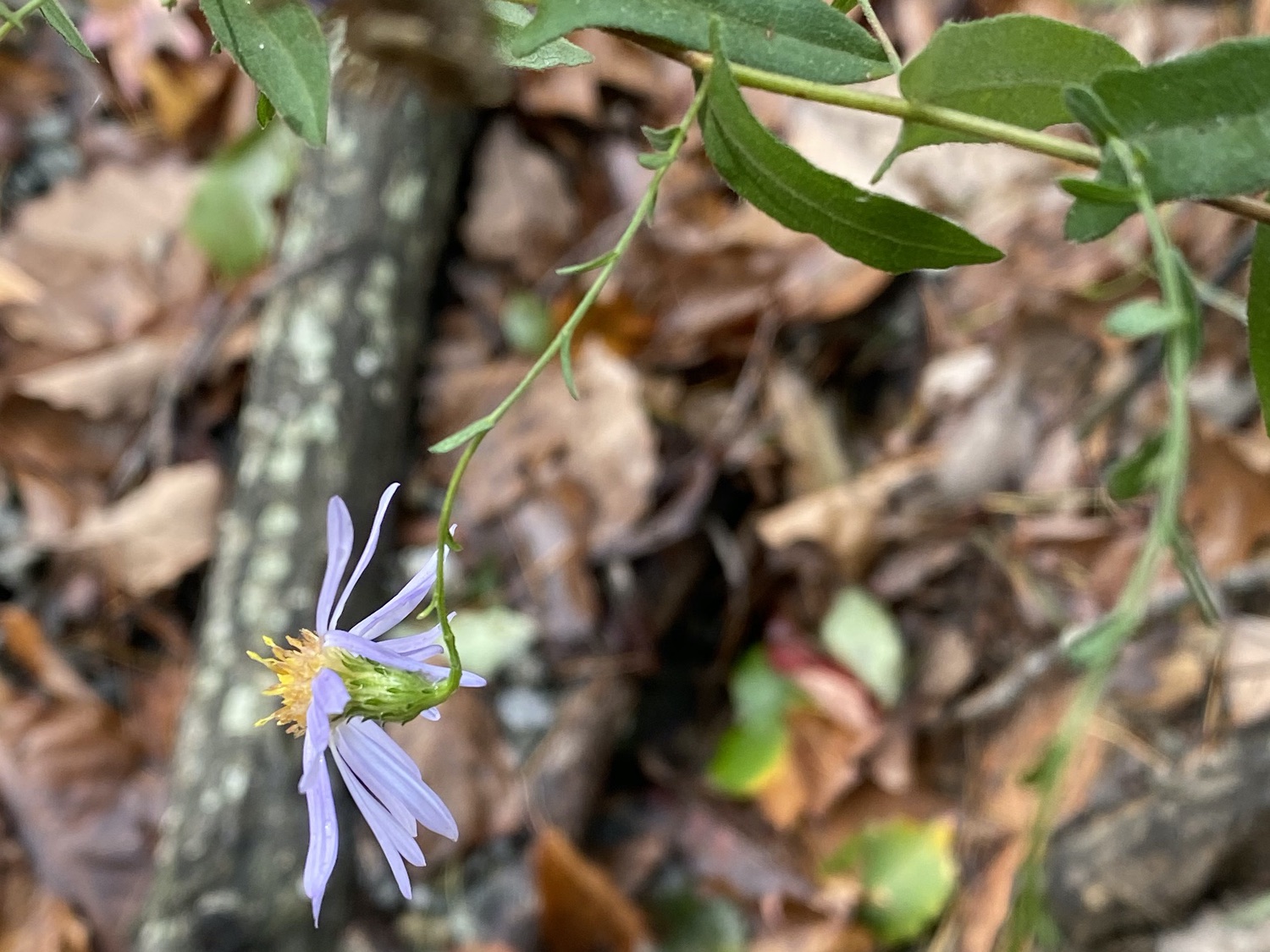
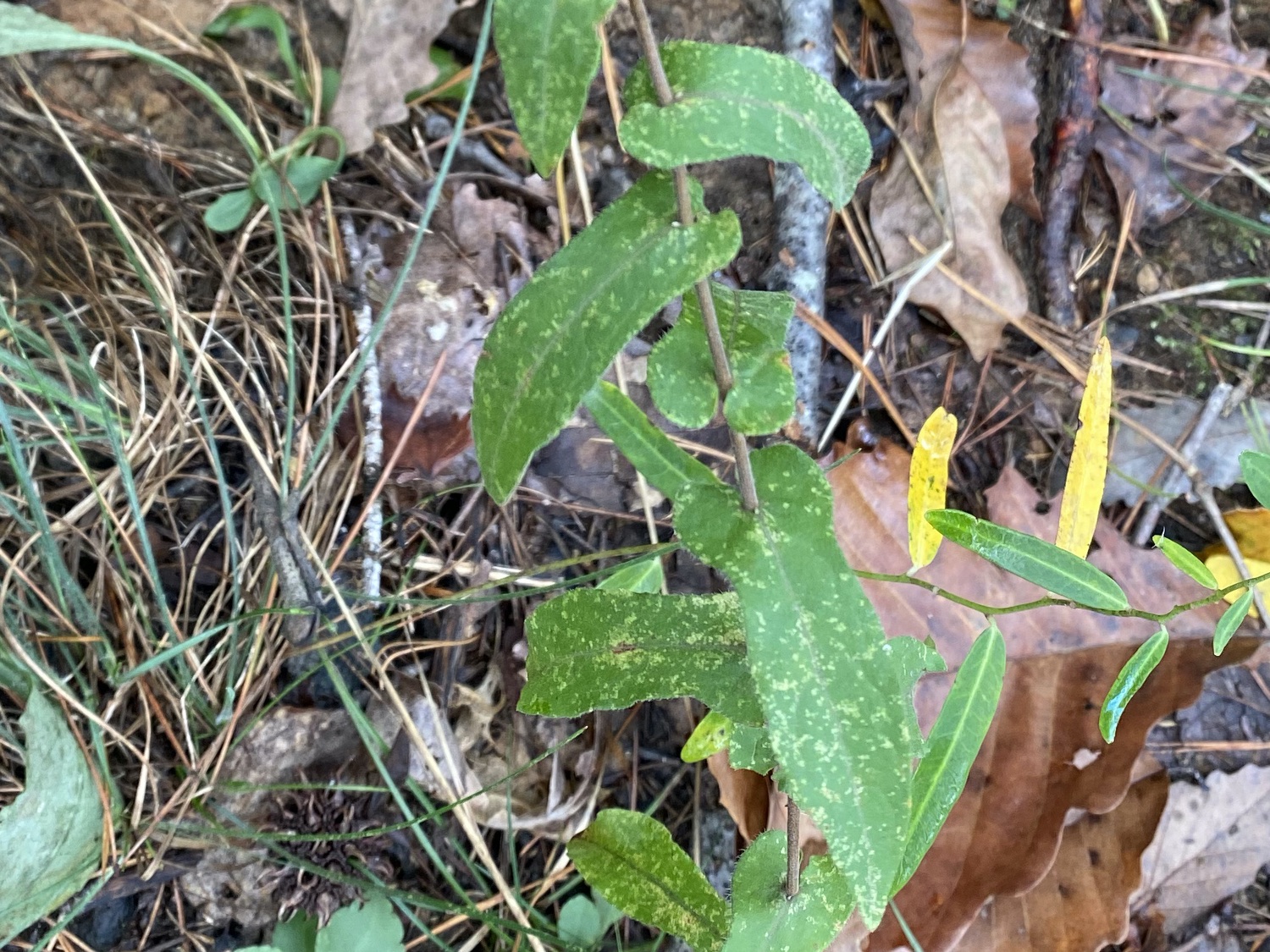
Georgia Aster (Symphyotrichum georgianum). These compound flowers have beautiful purple ray flowers, rusty reddish centers, and are large, 1½–2" wide. The phyllaries are pointed, dark-tipped, and project at right angles to the stem. The leaves are elongate, pointed, 1–2" long, and clamped tightly to the stem. The leaves are covered in stiff short hairs, giving them a prickly feel. The plant is 2–3' tall, and the stem is covered in short hairs.
The Georgia Aster is a rare species, but is reported from northeast Georgia (although apparently not Stephens County), and it is a deep-purple, late-blooming aster. Most of the characteristics seem to match, except for the stiff short hair; however, the leaves of the Georgia are described as scabrous (scabby), and that may have been what I felt. Although the leaves of the Georgia Aster are generally described as not hairy, the Lady Bird Johnson Wildflower Center illustrates leaves that are clearly hairy, as does Dave’s Garden.

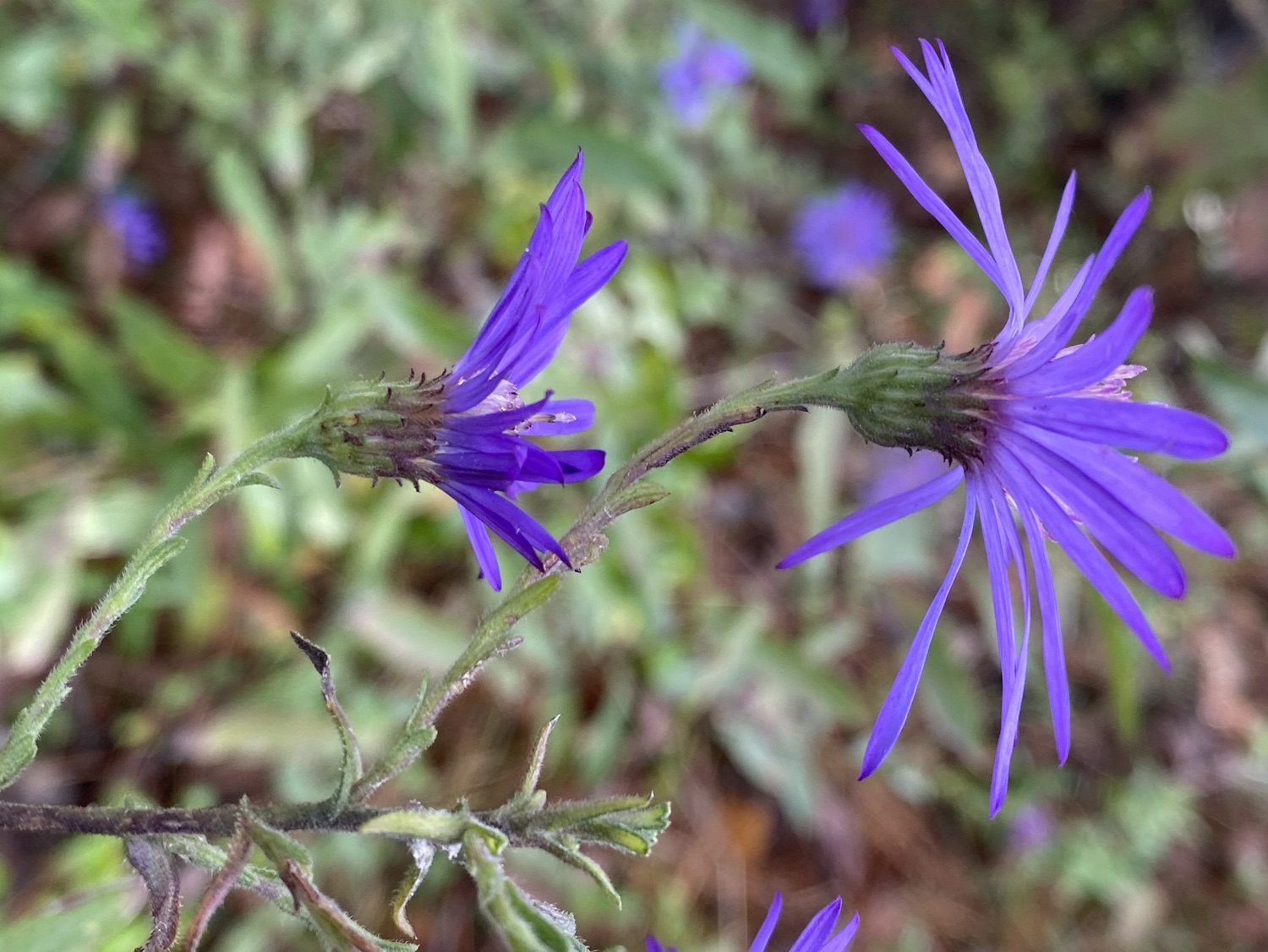
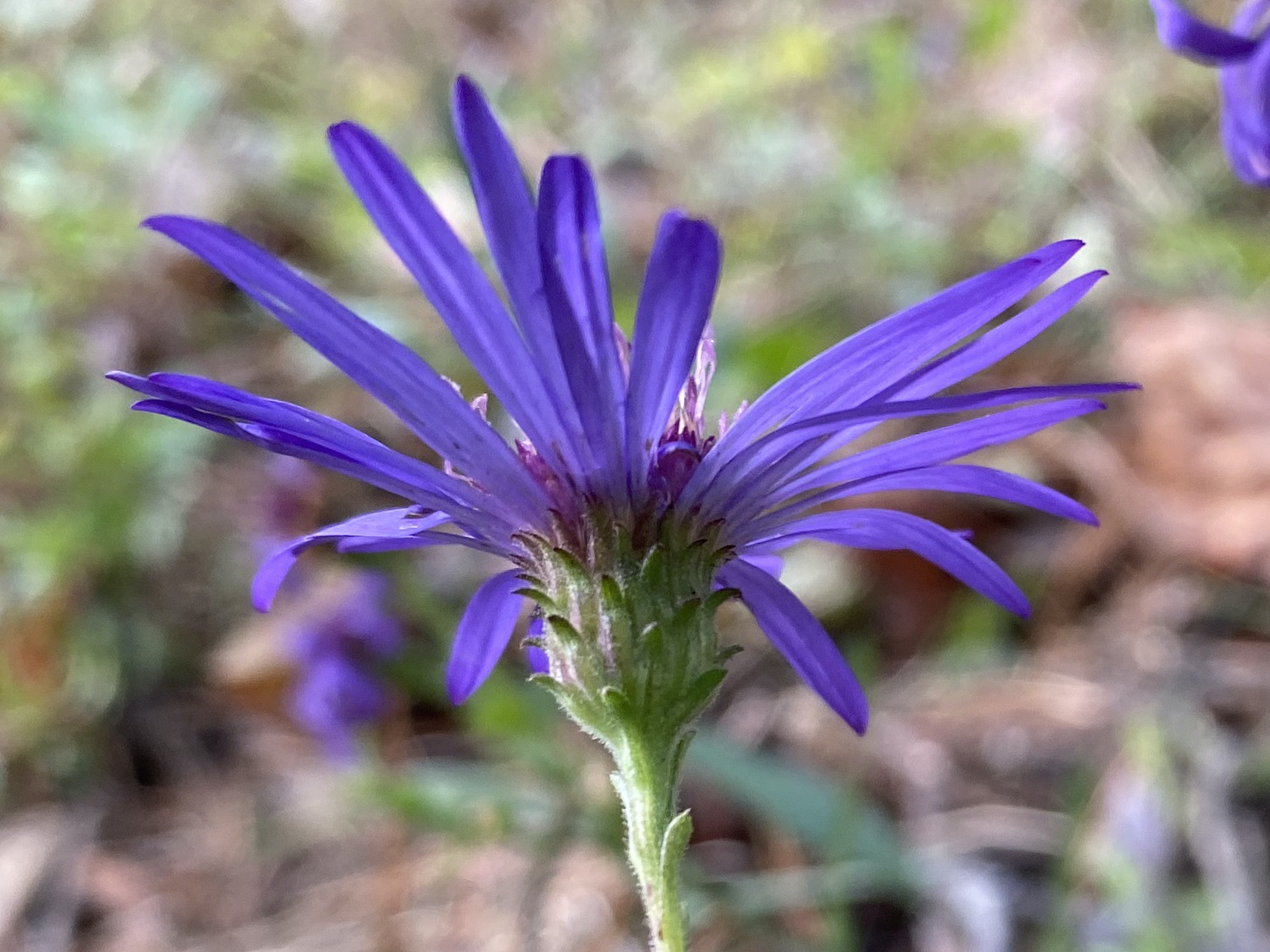
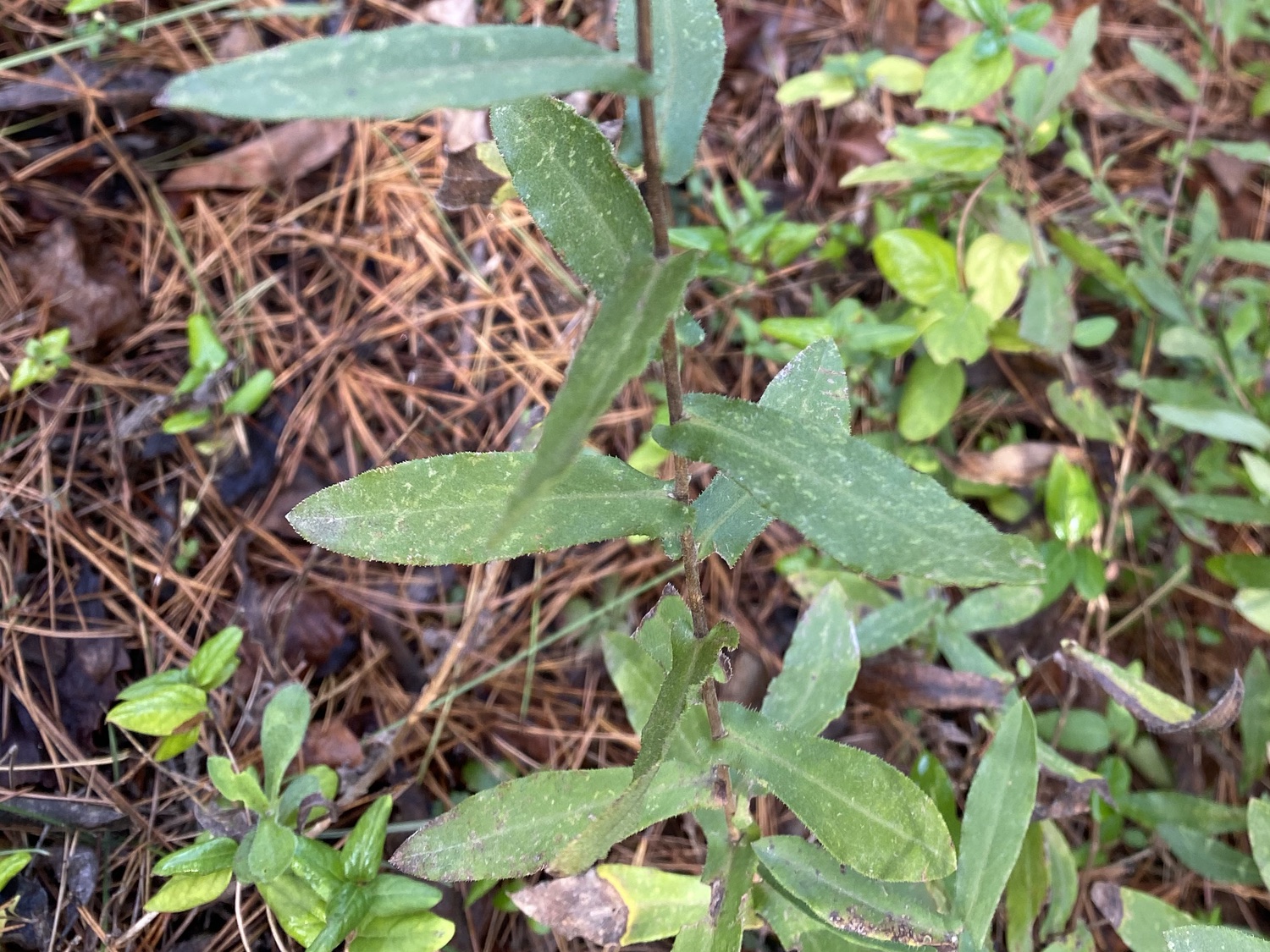
also Georgia Aster?. The ray flowers are somewhat less purple, but the flowers of the central disk seem similar to what I identify above as Georgia Aster. The leaves are similar to the Georgia Aster, but also the Clasping Aster. These are tough.
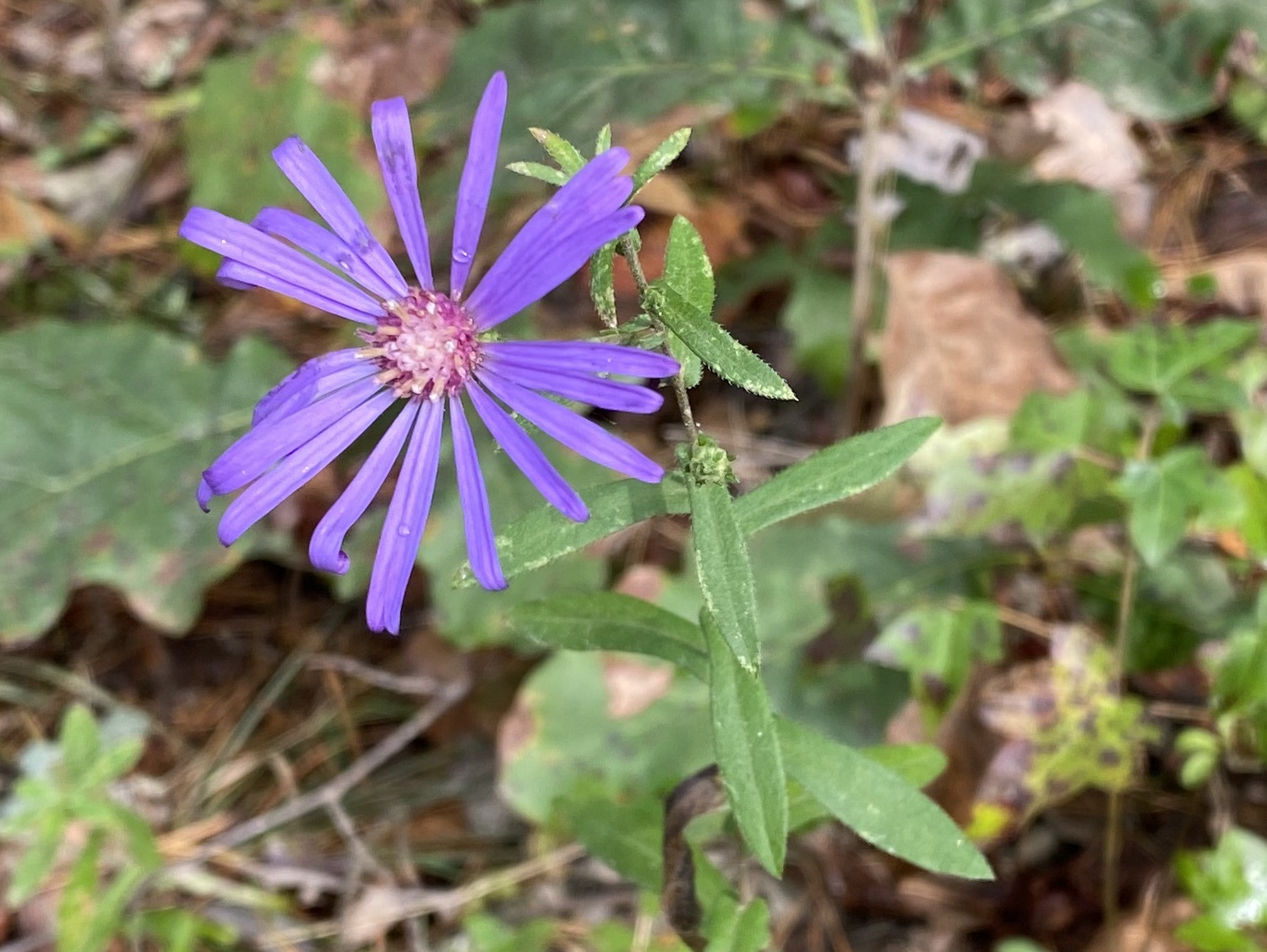
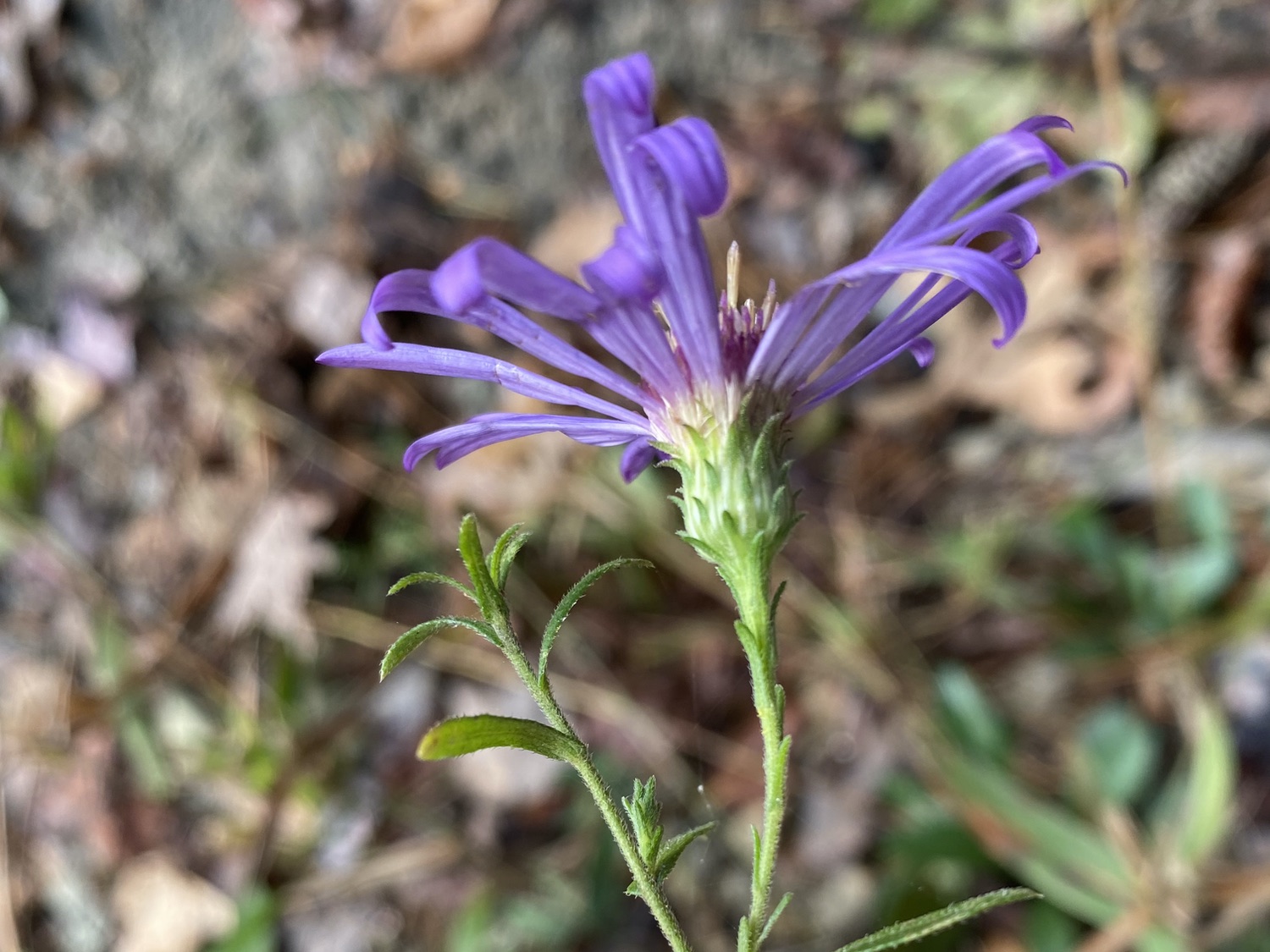
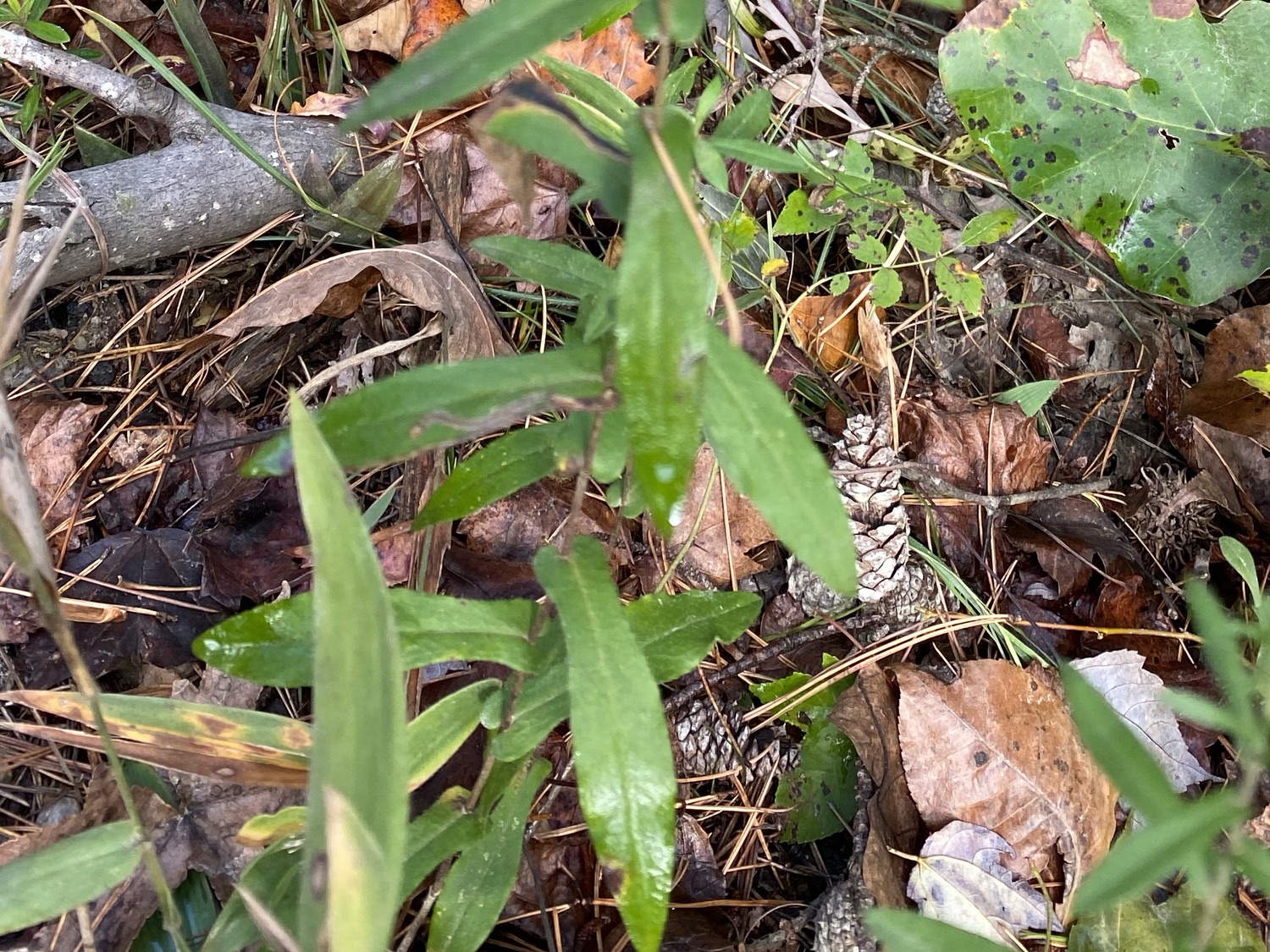
Another aster (Symphyotrichum sp.). These compound flowers have blue–lavender ray flowers and yellow to brown centers, and they are small, only about ½" wide. The phyllaries are pressed tight to the flower. The single main stem branches near the top to form a cluster of flowers. The leaves are tiny (¼–½") but a couple of inches long near the bottom, although they are so bug-eaten by this point that there shape cannot be determined. The plant is up to 4' tall, but often tips over from the weight of the flowers.
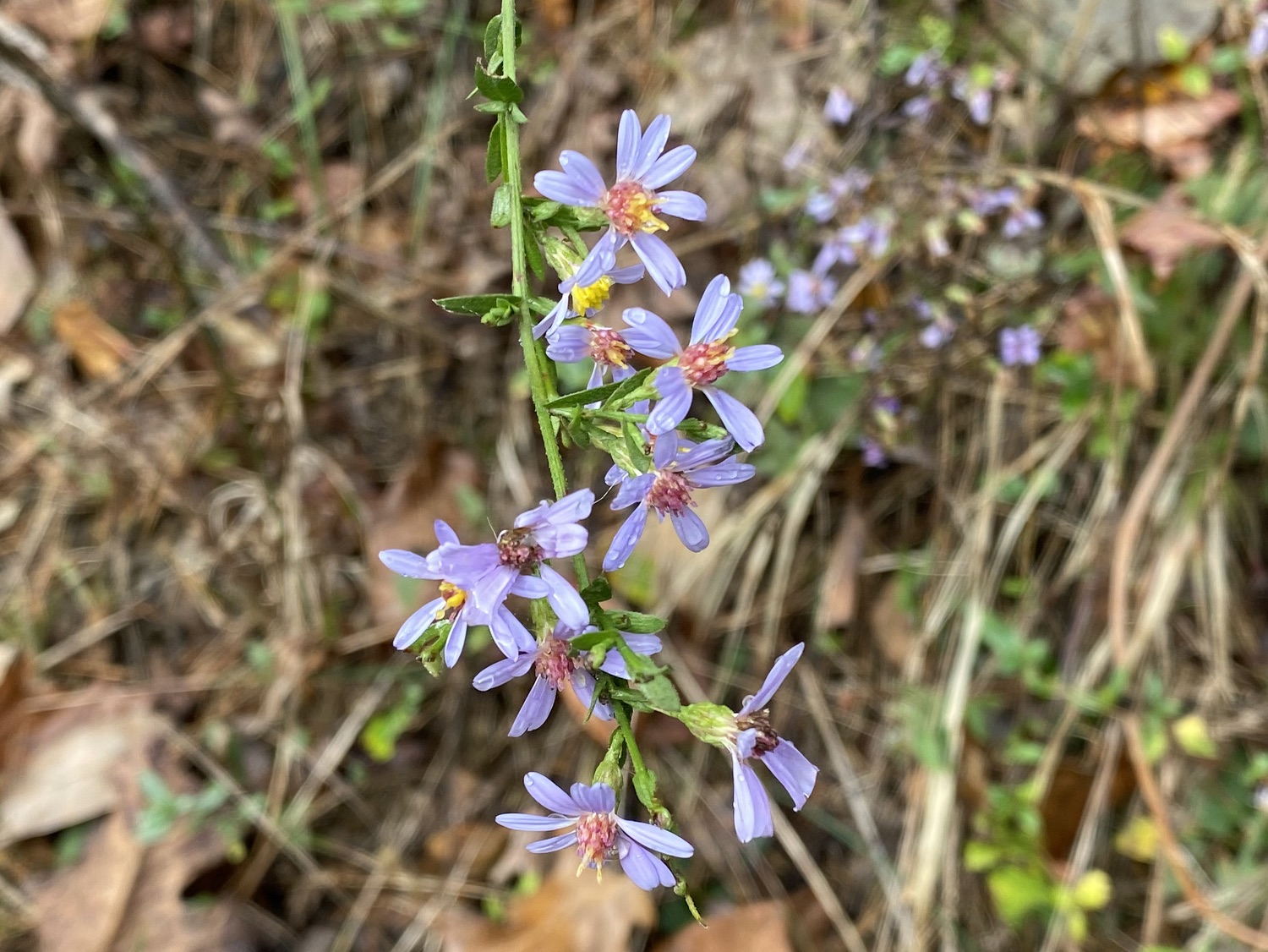
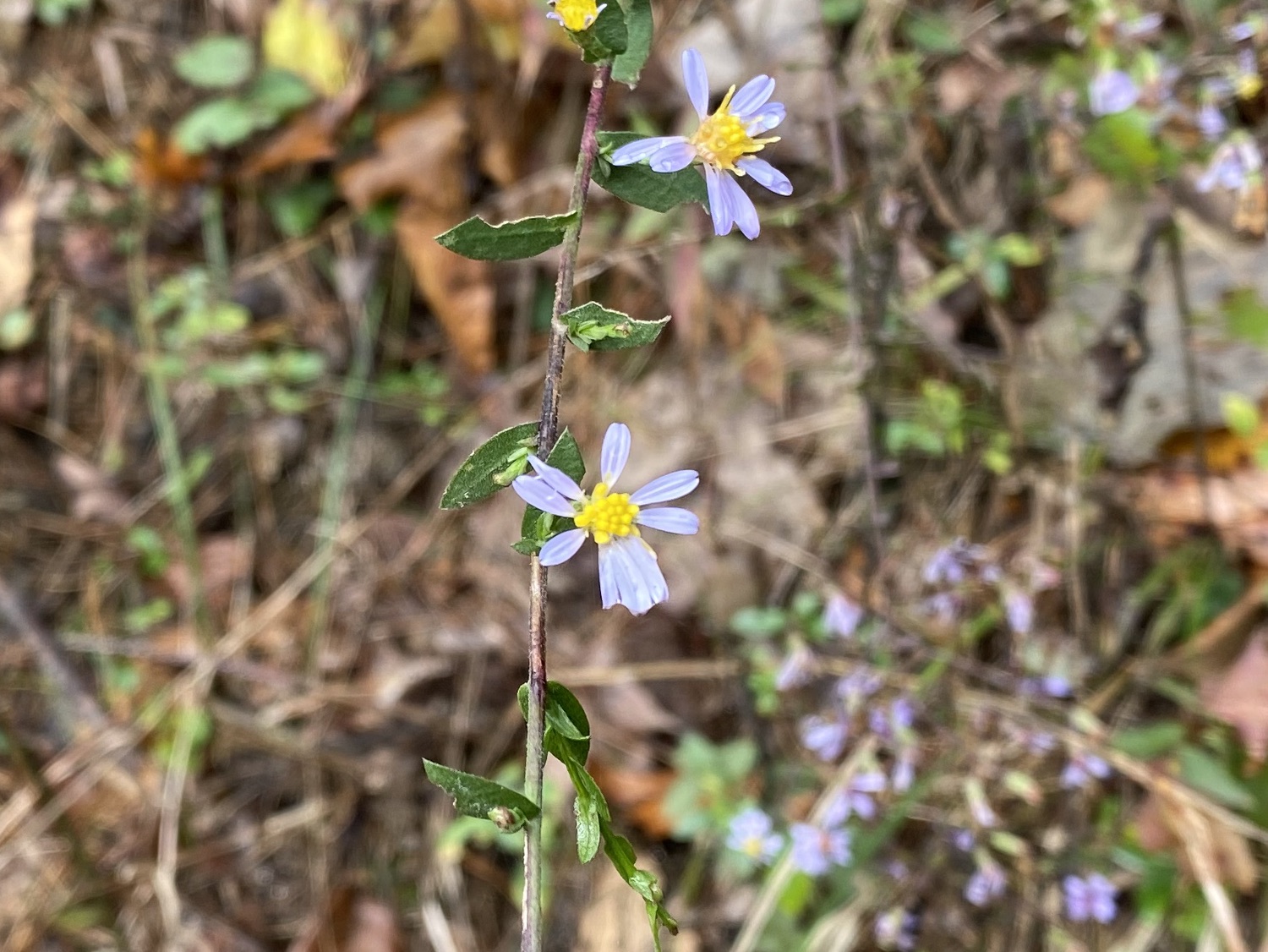
Tall Goldenrod? (Solidago altissima). This goldenrod is about 2' tall, and the single main stem splits near the top to form a half-dozen flower-bearing spikes. The flowers are yellow (of course). The leaves are elongate, pointed, slightly toothed (hard to see), and up to 5" long. The leaves are smooth and stemless, and clusters of tiny leaves grow from the axils of larger leaves. The main stem is smooth. I am not completely sure about the species identification, because it doesn’t have the pyramid of flowers at the end, although I am sure it is a Solidago.
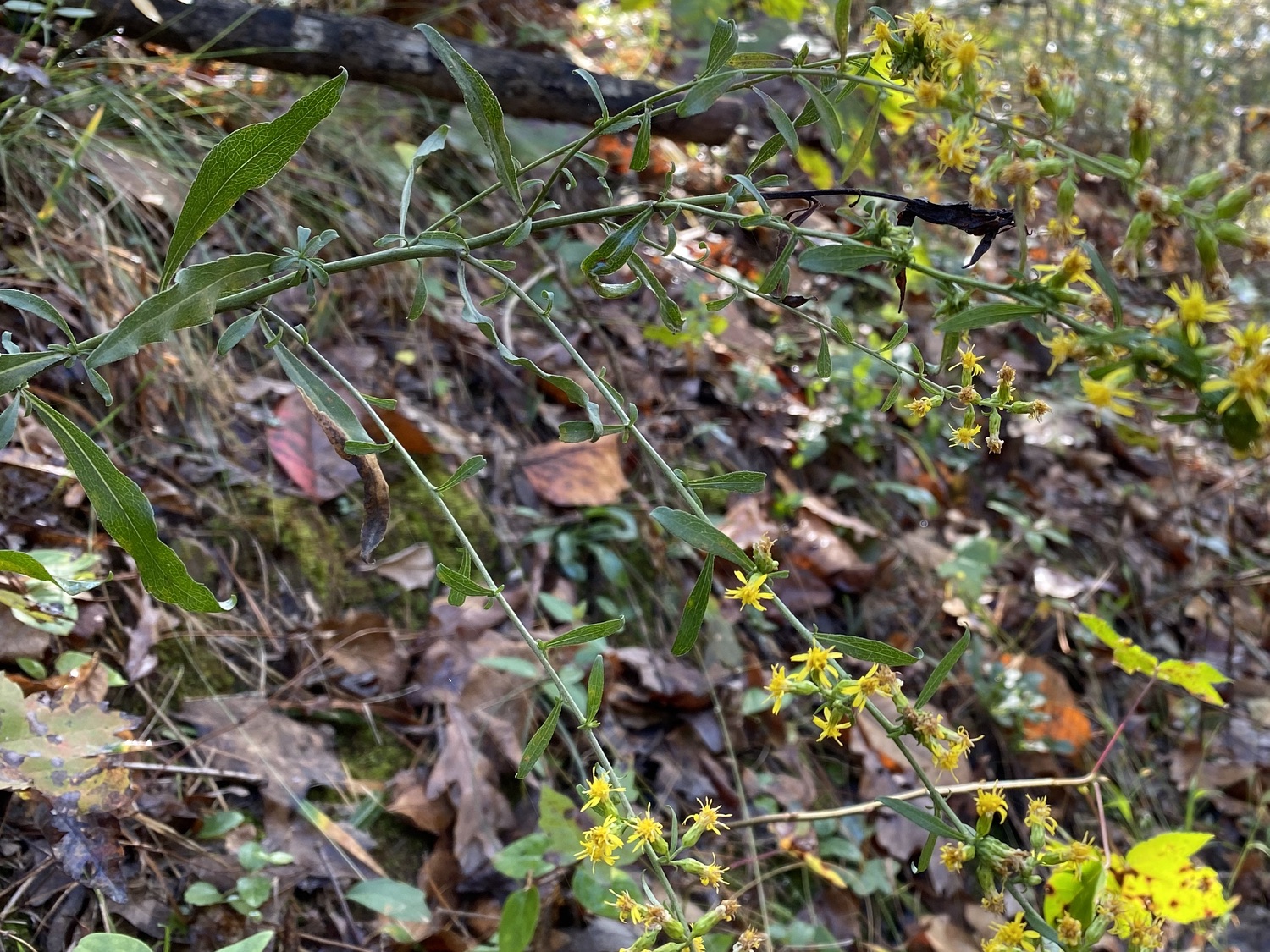
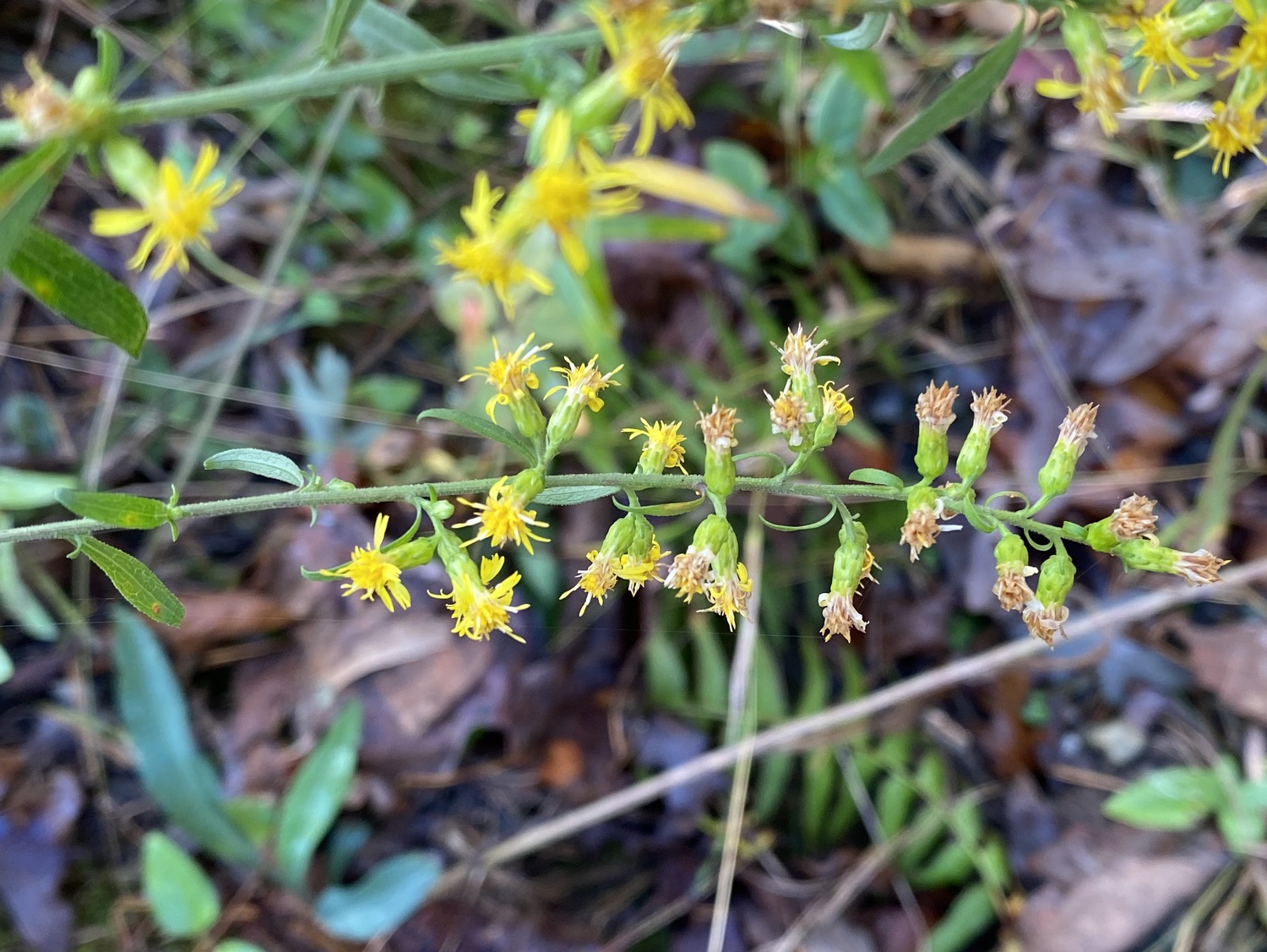

Rhododendron - but which one? (Rhododendron sp.). These striking pale pink flowers were seen on a single shrub or clump of shrubs about 6–7' tall. The flowers are tubular and flaring, with five deep lobes, and long, white, purple-tipped anthers. The flowers are about 2" long. The leaves are alternate, elliptical, and pointed, with smooth margins; they are somewhat stiff.
Although the flowers and leaves look to me like a rhododendron, I didn’t know that these bloomed so late — today is 1 November!
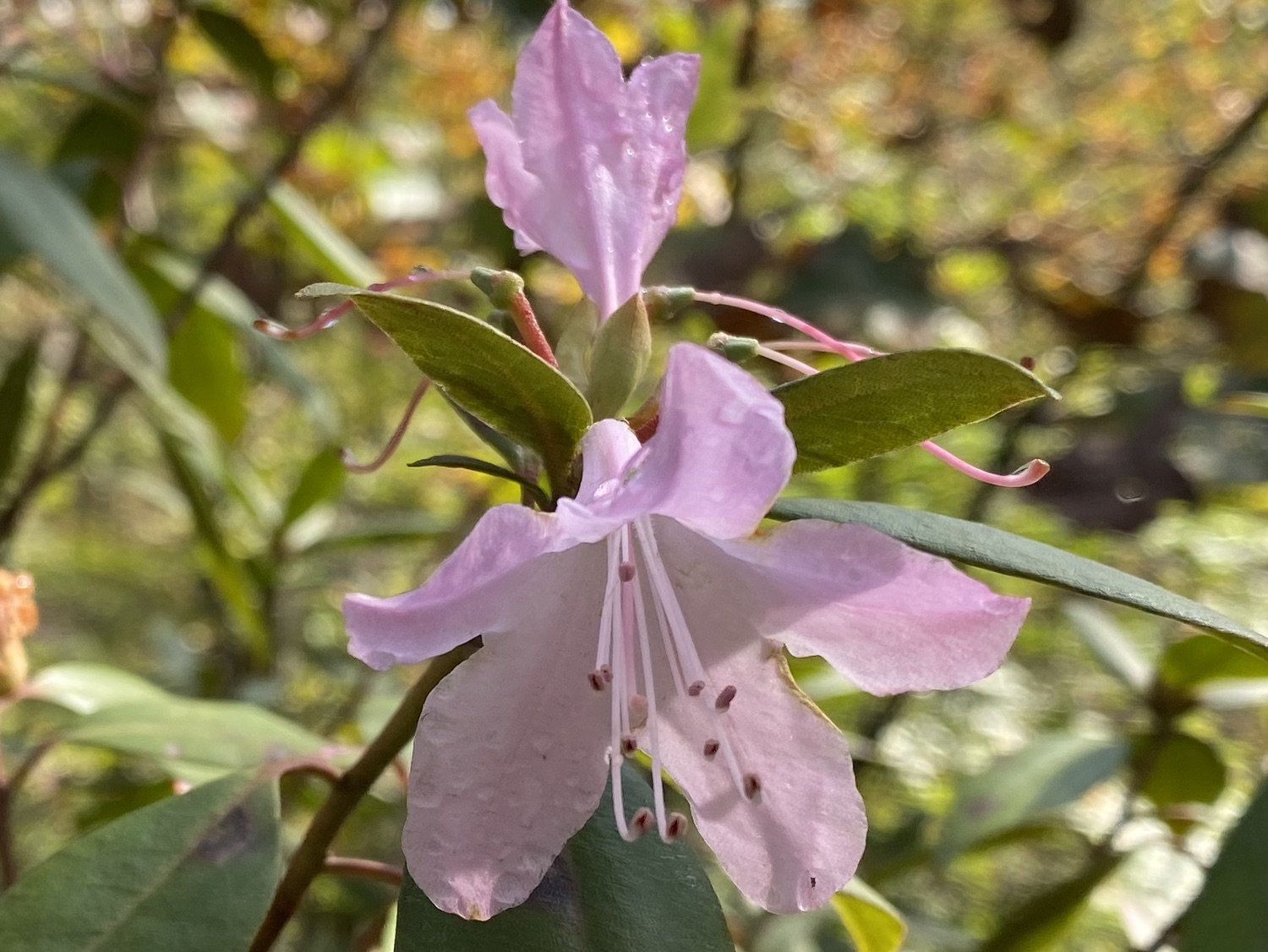



References
Chafin, L.G. 2016. Field Guide to the Wildflowers of Georgia and Surrounding States. The University of Georgia Press, Athens, Georgia.
Duncan, W.H., and M.B. Duncan. 1999. Wildflowers of the Eastern United States. The University of Georgia Press, Athens, Georgia.
Native & Naturalized Plants of the Carolinas & Georgia. This is a great searchable website that shows many species that field guides do not include, and it has more photographs annotated with key features, more than most field guides.
Using Georgia Native Plants. Ellen Honeycutt’s excellent blog just ran theis post on “Those Tiny White Asters”. She also has a nice post on goldenrods. Ellen updates her blog about once a week, and I highly recommend it.